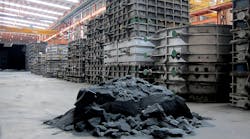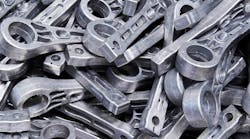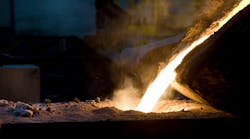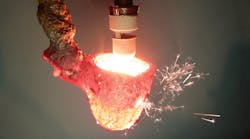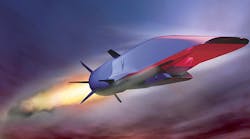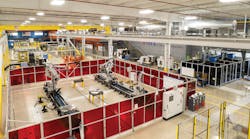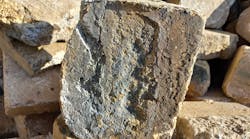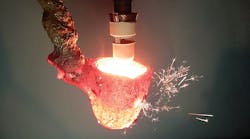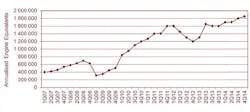Foundries worldwide continue to increase compacted graphite iron production totals, mainly in support of commercial vehicle programs, as revealed in the latest financial reports from SinterCast AB. SinterCast is the developer and supplier of the most widely used process control package for CGI production. According to its recent Q1 2015 statement, the process is on track to be credited for 100,000 metric tons of castings this year.
Stockholm-based SinterCast tracks production in terms of “engine equivalents,” which equates to 50 kg. In its Q1 2015 statement the developer noted series production using its process topped “2.0 million engine equivalents,” a year-on-year increase of 18%.
The developer has installed 23 fully automated systems, and 19 mini-systems, in Europe, Asia and North and South America.
Compacted graphite iron, CGI, is a lightweight alternative to gray iron and aluminum for diesel engine and other heavy-duty vehicle and automotive parts. CGI reportedly has “at least 75% higher tensile strength, 45% higher stiffness, and approximately double the fatigue strength” of cast gray iron and aluminum, though it has lately been adopted for some automotive gasoline engine programs. SinterCast noted that overall series production by its licensees during the past year has benefitted from Ford Motor Co.’s production of a 2.7-liter V6 gas engine for the 2015 Ford F-150.
European commercial vehicle programs’ increased production of cylinder blocks and heads also contributed to the rise in CGI production, as did the launch of production of industrial-power engine parts at Impro Industries in China.
“Based on customer production reporting, the SinterCast process was used for the production of more than 75,000 cylinder blocks during the month of March,” the developer stated. “The outlook remains positive in each of the passenger vehicle, commercial vehicle and industrial power sectors, as competitive benchmarks and market awareness continue to grow.”
More specifically, SinterCast noted the three new installation commitments recorded during the first quarter of 2015: Dongfeng Trucks, China's largest heavy-duty truck maker; Doosan Infracore, a South Korean manufacturer of diesel engines for its own construction and off-road equipment; and an unnamed Japanese “engine component foundry.” It added that Asian foundries currently account for 17 of the 42 SInterCast installations worldwide.
Subsequently, at the developer’s annual meeting, president and CEO Dr. Steve Dawson stated that, having surpassed the 2 million engine equivalents milestone during the first quarter of this year, the programs currently in series production have potential to produce over 2.5 million engine equivalents, or 125,000 metric tons/year, and programs still in development would enable SinterCast to surpass the three million engine equivalents (150,000 metric tons/year.)
SinterCast also provided an update on its development program for ductile iron process control technology, which have progressed to field trials and product development. “The current development is focusing on the optimization of the ductile iron thermal analysis sampling device and the metallurgical correlations, on the hardware and software user interfaces, and on the preparation for reference case studies,” SinterCast explained.
The developer said SinterCast ductile iron technology is expected to reduce magnesium consumption, which would lead to better mold yields and fewer casting defects. It also would improve the machinability of ductile iron castings.

